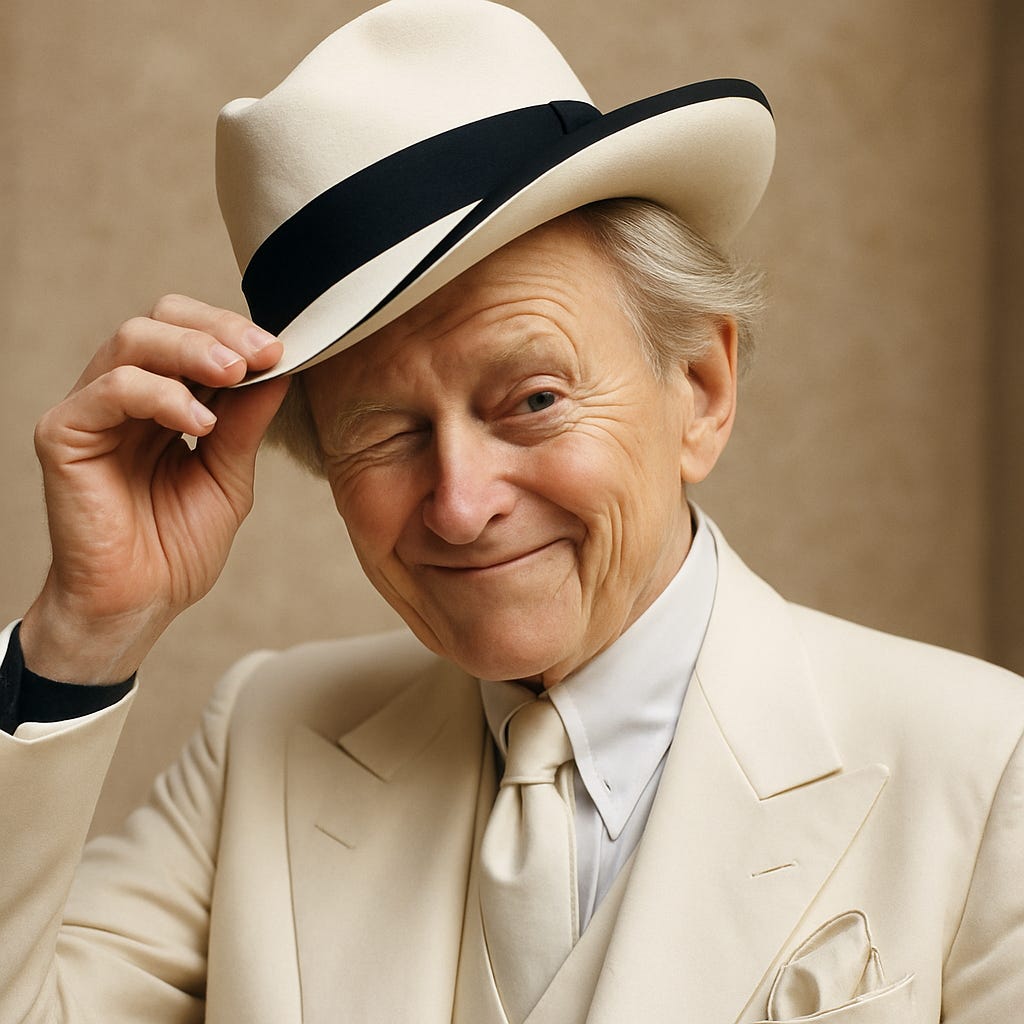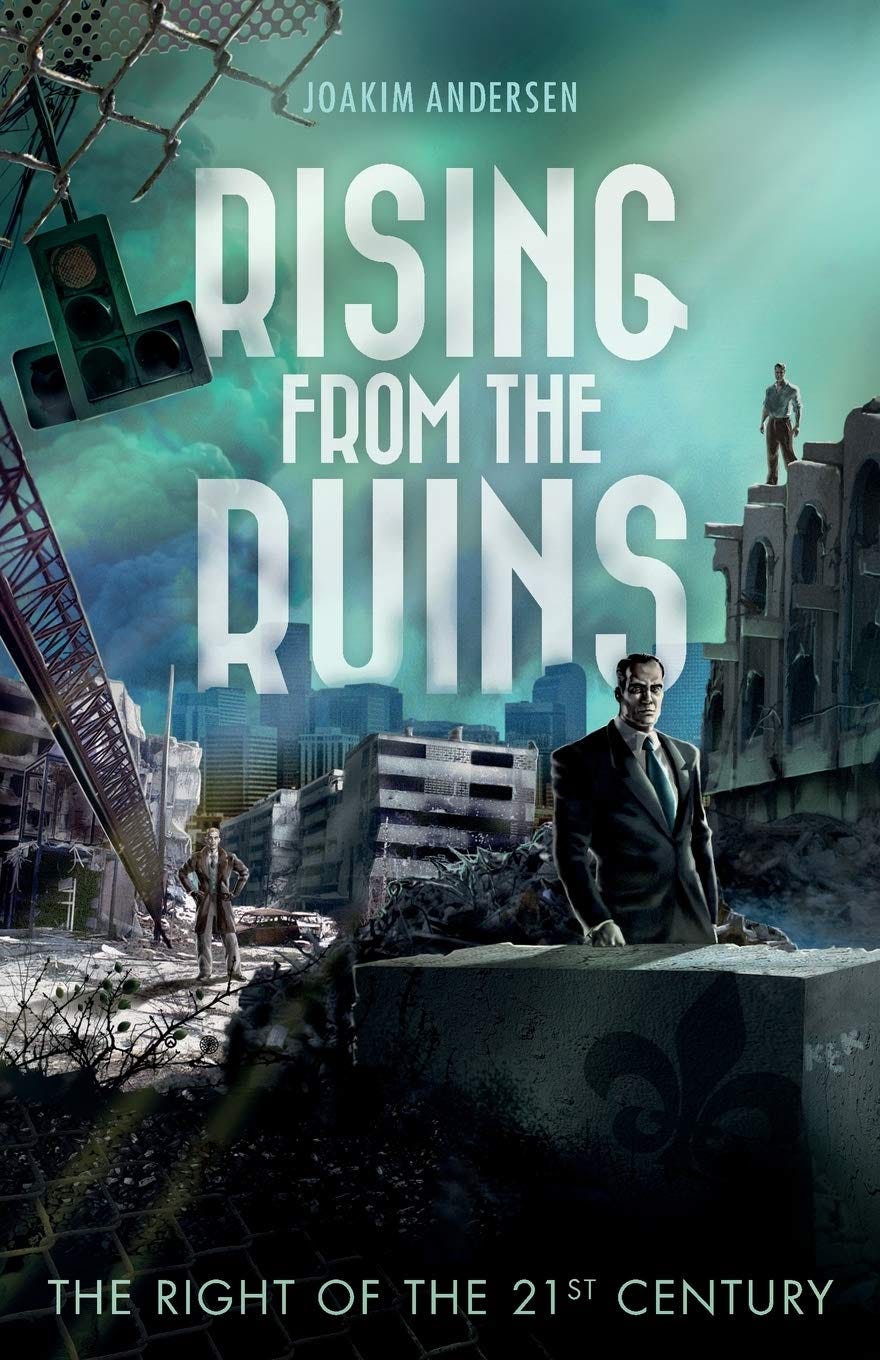Recommended Reading: Radical Chic
By Joakim Andersen
Joakim Andersen draws on Tom Wolfe’s Radical Chic to illustrate how elite fascination with radical movements often masks deeper class anxieties and symbolic distancing from the middle class. Wolfe’s original 1970 essay, set at a fundraiser for the Black Panthers hosted by Leonard and Felicia Bernstein, exposes the contradictions of upper-class liberalism, where social prestige and emotional gratification overshadow genuine political solidarity. The term “radical chic” captures this performative activism, which remains relevant in understanding today’s elite cultural behaviors.
To understand the left globalists and to comprehend the emotional foundations of the alliance between them and various ethnic groups are two intimately intertwined projects. This is also something we have devoted a great deal of effort to recently, and no real end to this endeavor is in sight. These projects overlap with the analysis of ideology, psychology, class analysis, and realpolitik. Valuable insights can be found in such diverse figures as Nietzsche, Bunker, Lawrence, Marx, Morrissey, Simmel, Weber, Lafond, and Burnham. Naturally, a key realization stemming from this project is that the dominant portrayal of twentieth-century history is ideology and mythology, crafted to suit the left liberal psyche and real political interests, and that it must therefore be rewritten.
Of particular interest in this context is the genre of books providing eyewitness accounts of episodes that are imbued with significance in liberal historiography, such as desegregation in the USA and World War II. Concerning the latter, one notes today a growing interest from, among others, Curtis Yarvin, Kanye West, and Darryl Cooper. Regarding the former, the prevailing mythology is likewise being challenged, for instance by bringing Martin Luther King Jr.’s politics and sexuality into focus. There are also a number of subaltern eyewitness narratives from people who were on the “wrong” side during episodes like the civil rights struggle, the “busing,” and so on. Notable examples include Kevin Purcell’s Philly War Zone: Growing Up in a Racial Battleground, Harold Saltzman’s Race War in High School, Levine’s and Harmon’s Death of an American Jewish Community, Edward Bunker’s prison memoirs, Yona Ginsberg’s Jews in a Changing Neighbourhood, and Scott Cummings’ Left Behind in Rosedale. E. Michael Jones’s Slaughter of Cities offers a solid theoretical perspective on the whole phenomenon.
Gradually, the insight emerges that white communities painted as “racist” because of “white flight” and resistance to desegregation reacted in a fully rational and legitimate way to ethnic cleansing and massive violence with racial overtones. Devin Helton, for example, describes in The Black Panthers in Dorchester: A Forgotten History how the jewish community in Dorchester over a two year period went from 40,000 to nearly zero as a result of crime and the Black Panther Party’s terror, a process he undoubtedly labels ethnic cleansing. The extreme acts of violence directed at jews in Dorchester and at older whites in Rosedale, recounted in Left Behind in Rosedale, bear a clear racial undertone. Helton also notes that around 4,000 people were lynched over a century, while the black overrepresentation in interracial murders compared to whites over a century is around 20,000. For people in communities like Mattapan and Rosedale, the real alternatives were to flee or to fight, white flight or white gangs. Phenomena such as the Ku Klux Klan, white prison gangs, and the Jewish Defence League are difficult to analyze without exposure to the above eyewitness narratives, regardless of whether they conflict with liberal sensibilities.
Highly revealing in this context is Tom Wolfe’s 1970 article Radical Chic, an equally entertaining and well written account of the phenomenon in which upper class circles invited radical groups to parties and gatherings. Wolfe was a divinely gifted storyteller, with an eye for detail and a sensitivity to the social codes of the upper class. He addressed issues such as how elite circles wrestled with their domestic staff, as it could look bad to invite Black Panthers if one had colored servants, but many solved this by temporarily hiring white equivalents. Another challenge was how to describe the guests to the servants: cultured people would of course say “blacks,” but servants could interpret that term as indicating a “limousine liberal,” so often the dreaded N word would be used instead, as a small concession.
Wolfe’s shifts between micro and macro perspectives are enlightening. He was aware of how the composition of the elite in New York was changing over time, by 1970, WASP strata were being squeezed out by Jewish and Catholic elite layers. “Society in New York was going through another of those new money upheavals that have made the social history of New York read like the political history of the Caribbean, which is to say, a revolution every 20 years, if not sooner,” as Wolfe wrote. A strategy among the new groups tended to be symbolically and culturally distinguishing themselves from the older elites. Wolfe invoked the French term nostalgie de la boue, “longing for mud” (as translated by Dan Berglund), a romanticization of primitive souls. The nouveau riche essentially have two options: they can adopt aspects of aristocratic culture, or aspects of underclass culture, or, in practice, a bit of both. Against this background, Wolfe interpreted the phenomenon of radical chic as a way to distance oneself from the detested middle class. He noted, “one rule is that nostalgie de la boue, i.e., the styles of romantic, raw vital, Low Rent primitives, are good; and middle class, whether black or white, is bad. Therefore, Radical Chic invariably favors radicals who seem primitive, exotic and romantic.”
In many ways, the radicals of the 1960s were more honest than today’s counterparts, which is why some of their language choices now seem embarrassing. This includes how New York radical Gregory Armstrong described the prisoner and writer George Jackson with phrases like “his body seems to curl like a cat’s” and “he gives me a brilliant smile of pure sensual joy.” In the radical chic context, we encounter phrases like “these are no civil rights Negroes wearing gray suits three sizes too big, these are real men!” D. H. Lawrence had decades earlier analyzed the same psychology using the concept pair of blood consciousness and mind consciousness. The upper class strata engaging in radical chic had limited blood consciousness and were thus attracted to the image of the Black Panthers as so real, so hip and funky, so full of Soul. Compare how the white radicals in the Weathermen adopted black speech, “you dig,” and how some white radical groups even freed black criminals to get a “real black” as their leader. There was a clear erotic aspect, which has since been downplayed, where the Black Panthers were portrayed as real men. Wolfe’s description of their wives summed it up: “somehow it all runs together in the head with the whole thing of how beautiful they are. Sharp as a blade.”
At the same time, the interests of the invited Panthers and their hosts were fundamentally different; there was a significant measure of projection and manipulation involved. The Panthers represented a socialist revolution that would not have benefited the Bernsteins and their circle. Compounding this was the relationship between the Panthers and Jews. Wolfe vividly illustrates how nervous the Panthers’ friends became when one mentioned how they were asking local shopkeepers for donations, “for God’s sake, Cox, don’t open that can of worms. Even in this bunch of upholstered skulls there are people who can figure out just who those merchants are, what group, and just how they are asked for donations, and we’ve been free of that little issue all evening, man, don’t bring out that ball breaker.” The local shopkeepers the Panthers coerced into donating were largely Jewish, and the ethnic cleansing in Dorchester was fully underway when the Bernsteins hosted their Panthers in 1970. As early as 1967, the Panthers’ paper Black Power published a poem titled Jew Land, meaning that “it was never too early to kill Jews.” The movement also supported the Palestinians against Israel. The Bernsteins were attacked as masochists and withdrew their support for the Panthers. Wolfe observed that “one of the ironies of the history of the Jews in America was that their long championship of black civil liberties had begun to backfire so badly in the late 1960s.” The historical tendency toward elite rotation and nostalgie de la boue may be general, but specific features of rotating elite layers also shape how the process unfolds. The Jewish elite in New York had several such characteristics that made their relationship with blacks a fairly one way love affair. Jewish upper elite within the culture industry are often described as intent on spreading black culture to harm white America, there is a clear element of genuine fascination, which perhaps is best understood using Lawrence’s concept. It is not rational, which a growing number of American jews realized after October 7. Compare the Myrdals’ (Editors note: Swedish intellectual couple prominent in the 20th century) small reflection that “the youth of the owning class had learned from the French Revolution a lesson about the connection that exists between radical enthusiasms and practical realities.”
Taken together, Wolfe’s portrayal of the Bernsteins’ party offers valuable insights into the elite’s relationship with the contemporaneous ethnicized underclasses. There are real political and economic dimensions to mass immigration and asymmetric multiculturalism, but there is also the element Wolfe called nostalgie de la boue and the marking of distance from the “middle class.” The Bernsteins and their circle had low blood consciousness and were highly prone to being attracted by images of the Black Panthers, Young Lords, and others, while concrete class interests and conflicts made them less inclined to relate to the white working class. The same mechanisms can be observed today among certain urban elite and middle strata.
We read Wolfe’s classic article here: “Radical Chic”
(Translated from the original Swedish article)




